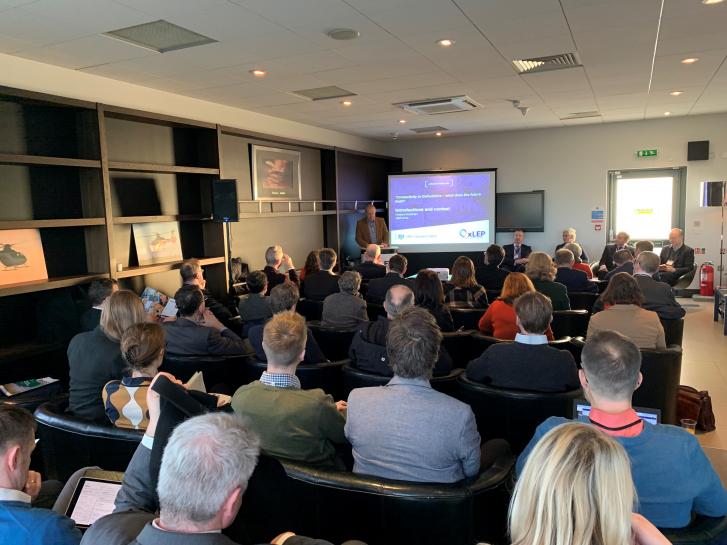
Despite above-average superfast broadband connections, Oxfordshire is still behind global competitors in terms of overall digital connectivity – just one of the topics covered at OxLEP’s latest Q&A event.
Around 50 business leaders from across Oxfordshire came together earlier this week (28 January) for OxLEP's latest Q&A event.
The debate: ‘Connectivity in Oxfordshire – what does the future hold?' took place at London Oxford Airport and continued a series of Q&As, bringing the county’s business community closer together.
At the latest Q&A event, delegates discussed key connectivity-related topics including; how can new technologies – like the continued evolvement of electric vehicles – be utilised to create a better-connected county, given an ever-increasing priority of ‘clean growth’ and whether our communities and businesses are aware that Oxfordshire is at the heart of smart solutions.
In addition – the panel and audience discussed how Oxfordshire businesses and communities can benefit from these solutions.
Previously, Q&As have focussed on areas such as placemaking and how the county’s productivity can be boosted.
Panellists for the Q&A included; Nigel Tipple – Chief Executive of OxLEP, Cllr Yvonne Constance – Oxfordshire County Council’s Cabinet Member for the Environment, James Dillon-Godfray – Head of Business Development at London Oxford Airport and Antony Page – Director at helloEV.
The debate was chaired by radio presenter Howard Bentham.
Rob Panting – Communications Manager at OxLEP – said: “Once again, our Q&A has provided businesses with an invigorating forum to discuss a key aspect of our economy.
“Supporting our businesses and communities to move more freely and connect more easily – both in terms of physical and digital infrastructure – is a major topic. Our Q&A highlighted how significant solutions, not only benefitting our own communities, but also providing answers more-globally, are being generated right here in Oxfordshire.”
The Q&A also offered businesses another opportunity to discuss the Oxfordshire Local Industrial Strategy – launched by OxLEP alongside other key partners last September.
The strategy sets out the ambition for the county to be one of the top three global innovation ecosystems by 2040, with development of physical and digital connectivity underpinning the vision.
A priority instrumental to achieving the aims set out by the strategy is the provision of a digital infrastructure that will deliver for all communities within Oxfordshire.
The Better Broadband for Oxfordshire programme has so far enabled over 96 per cent of premises in the county to have access to superfast broadband and around seven per cent of premises in Oxfordshire currently have access to full fibre to the property connectivity.
Whilst these figures are double the national average, showing the success in the roll-out of ultrafast ‘fibre to the premises’ and the vast improvement in broadband connectivity for the county, Oxfordshire is still behind many global competitors.
The Oxfordshire Local Industrial Strategy sets out the plan for the county to work with the Department for Digital, Culture, Media and Sport – as well as national and regional partners – to develop and implement an ambitious and competitive Digital Investment Plan.
The plan will aim to ‘accelerate the roll out of full gigabyte fibre to premises, 5G and next generation telecommunications across the innovation ecosystem’ to provide the highest standards of digital coverage across Oxfordshire.




